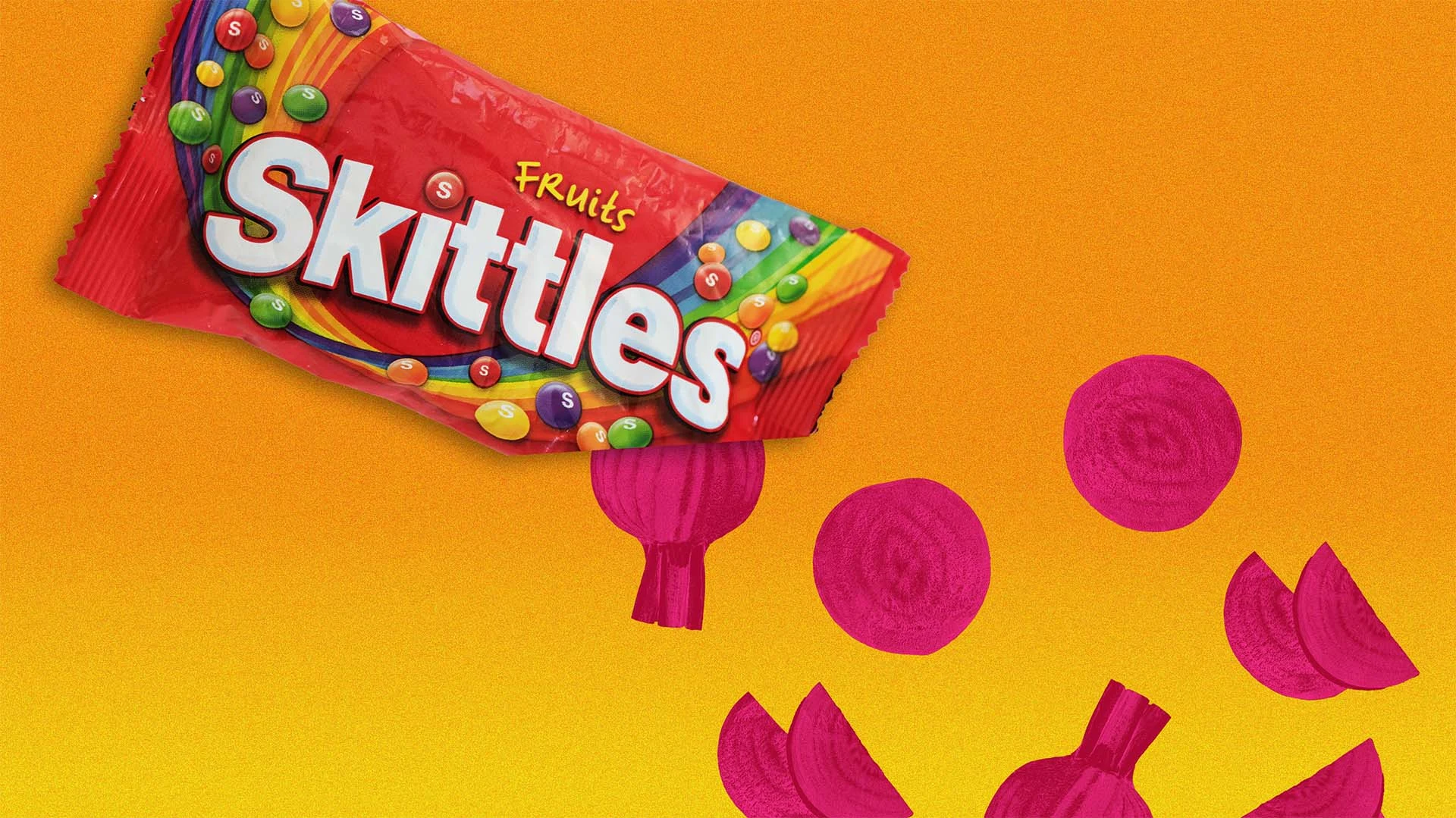
Popular American foods like a packet of Skittles and a box of Fruit Loops could soon look a little different as companies race to strip products of artificial dyes and swap in natural colorants to comply with the Make America Healthy Again agenda.
The U.S. Department of Health and Human Services and the Food and Drug Administration in April announced plans to phase out nine petroleum-based synthetic dyes from American food products, aiming to remove a majority of these dyes by 2026. So far, the government only banned one color, Red Dye 3, which must be removed by January 2027 — though HHS is asking companies to remove it before the deadline.
“The big challenge in the industry right now is the fast track,” says Alice Lee, a technical marketing manager at GNT USA, a distributor and developer of natural food dyes based in Tarrytown, New York. “A lot of the momentum is coming from the shifting regulatory landscape.”
What it takes to reformulate food dyes
Consumer packed goods brands across the country are scrambling to find food manufacturers specializing in alternatives to synthetic dyes. Enter GNT USA, which offers a line of natural food colorants called EXBERRY, primarily using fruits and vegetables that come in about 400 shades for use in food and beverages.
Featured Video
An Inc.com Featured Presentation
The process of replicating a product’s color — and replacing the artificial dye with one made from natural ingredients — can be time-consuming. While Lee says that matching colors within a lab can be done swiftly, “making sure they hold up in full production and all the way to the consumer’s home can take months.”
Some colors are easier to work with compared to others. Varying hues of blue can be more difficult to replicate, Lee says, despite ran FDA decision in May approving some new raw materials that give producers the option of extracting natural blue coloring from an algae known as Galdieria sulphuraria.
Unlike synthetic dyes, natural colors may behave differently in existing industrial-scale food and beverage recipes, so companies must consider their effect on factors like taste, odor, acidity, and other carefully calibrated chemical factors that go into mass-produced food formulas. That’s also the case for the same product (think candy) when manufacturers work with different colors.
For example, a gummy bear manufacturer will work with a variety of raw materials to create a pack of gummy bears in every shade of the rainbow. Even if the starting product is the same, since every gummy bear is made from gelatin, that plain gummy will interact differently with the color pigment anthocyanin, which is extracted from black carrots to make a red dye, versus extracting the color green from something like spirulina plants, which is more sensitive to heat.
“You always have to consider the chemistry of the raw material and how it behaves in your recipe,” Lee says. “Make sure you’re choosing the right raw material based on technical considerations like pH and heat sensitivity.”
A lingering problem
Synthetic dyes have colored the U.S. food supply for decades. And the health risks associated with consuming the is well-known. Links between Red No. 3 and tumor growth within lab studies is what nudged the FDA to ban the substance in January this year.
So why have dodgy dyes been included in the food supply for so long?
Largely because they cost less than their naturally derived counterparts. Because synthetic dyes can be extracted in bulk from crude oil, compared to pricier processes to turn fruits and vegetables into food and beverage pigments. Since synthetic colors are heavily concentrated, manufacturers tend to use a smaller amounts of dyes compared to natural colors, which require more product to achieve similar results. This is known as “cost-in-use.”
“This will require some reformulation by R&D teams as they think about how to switch from what they’ve been using for years into some of these more natural options,” says Anna Gensch, Director of R&D at Simple Mills, a healthy food producer headquartered in Chicago. “There’s also a chance that the type of packaging might need to be modified, like a clear film might no longer work, as a natural colorant is more susceptible to fading when exposed to light.”
Companies like Simple Mills, which focused on natural ingredients since the company’s inception, have a leg up on companies that are rushing to reformulate.
Simple Mills, which makes crackers, cookies, and other types of snacks, uses annatto coloring for its “Farm Health Shadow Crackers” to boost the orange color within the product. Annatto is extracted from the seeds of achiote trees, which usually grow in South and Central America.
Going up against shelf life
Another obstacle companies changing their coloring ingredients face, besides the increased cost, is the shelf life of natural coloring.
If you compare a bowl of Fruit Loops in Europe (a marketplace generally ahead of the curve of the U.S. regarding food safety) to a U.S.-made one, the continental counterpart tends to look less vibrant compared to the American one, a difference that grows over time as the natural hues fade.
“You’re paying a premium price for these natural colorants that are extracted from fruits, vegetables and algae,” says Alireza Abbaspourrad, an associate professor of food chemistry and ingredient technology at Cornell University. “Now you put them inside the product, and they will not perform as well as the synthetic ones.”
Abbaspourrad adds that research has shown that products with less vibrant colors have not sold as well as products colored with synthetics.
Weather is another consideration, since climate affects the crops of plants used in natural pigments. Too much rain can dilute the natural red pigment found in red beets, says Givaudan’s Ann Leonard, who heads the Swiss company’s food and beverage color business unit. “At the other end of the spectrum, if you’ve got a drought, that can harm the root growth entirely: tropical crops like annatto or paprika can really be affected by dry spells.”
The rush to comply
In September, the FDA published an industry tracker of 20 large companies and associations — including Kraft Heinz, PepsiCo, and Walmart — to keep tabs on their progress getting rid of synthetic dyes. This is in line with the Trump administration’s explicitly interventionist approach to influencing how some companies steer their own ships. (Coca-Cola in July agreed to sell a version of its sod with cane sugar after Trump had called on the beverage giant to do so.)
But state governments are also getting on board this MAHA initiative.
In March, West Virginia Governor Patrick Morrisey banned seven dyes from foods used in school lunches, starting this summer. The same bill prohibits the sale of food products containing those dyes by 2028. Even without official federal legislation, varying state measures will make it difficult for companies to sell their products, giving producers large and small a strong incentive to reformulate their products’ pigments now.
“Time is certainly a challenge,” Leonard says. “We’re working closely with customers to really understand every parameter, whether it’s the products, pH level, processing time or the packaging required in order for them to hit the target shade and the target shelf life.”



